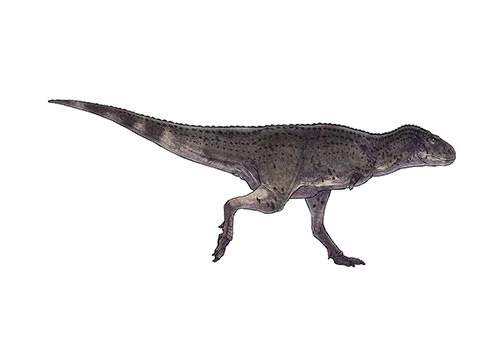Aucasaurus (Auca lizard)

Aw-cah-sore-us
Coria, Chiappe & Dingus - 2002
Carnivore
Estimated 5-6 meters long
Large Theropod
A. garridoi (type)
Argentina - Anacleto Formation
Late Cretaceous, 80 million years ago
Aucasaurus Facts
Aucasaurus is a genus of theropod dinosaurs that lived during the Late Cretaceous period, approximately 80 million years ago. The genus contains a single species, Aucasaurus galtieri, which was first discovered in the Rio Limay Formation of Patagonia, Argentina.
Aucasaurus was a medium-sized theropod dinosaur, estimated to have measured between 5 and 6 meters in length and weighed between 500 and 600 kilograms. It was a bipedal predator, meaning that it walked on two legs and had large, sharp claws on its forelimbs for hunting and capturing prey.
Aucasaurus is significant because it provides valuable insights into the fauna and ecosystem of the Late Cretaceous period in South America. At the time, South America was an isolated continent with a unique and diverse dinosaur fauna, and the discovery of Aucasaurus in the Rio Limay Formation highlights the importance of this region for the study of dinosaur evolution and diversity.
In addition, Aucasaurus is an important part of the story of theropod dinosaur evolution, as it represents a transitional form between early and more advanced theropod dinosaurs. Its anatomy provides valuable insights into the evolution of theropod dinosaurs, and its presence in the Rio Limay Formation highlights the diversity and complexity of the Late Cretaceous dinosaur fauna in South America.
In conclusion, Aucasaurus is a fascinating dinosaur species that provides valuable insights into the fauna and ecosystem of the Late Cretaceous period in South America, as well as the evolution of theropod dinosaurs. Although not as well-known as other dinosaurs, it is an important part of the story of dinosaur evolution and diversity. I hope this brief overview has sparked your interest in this amazing dinosaur genus, and I encourage you to learn more about its discovery, anatomy, and significance.



